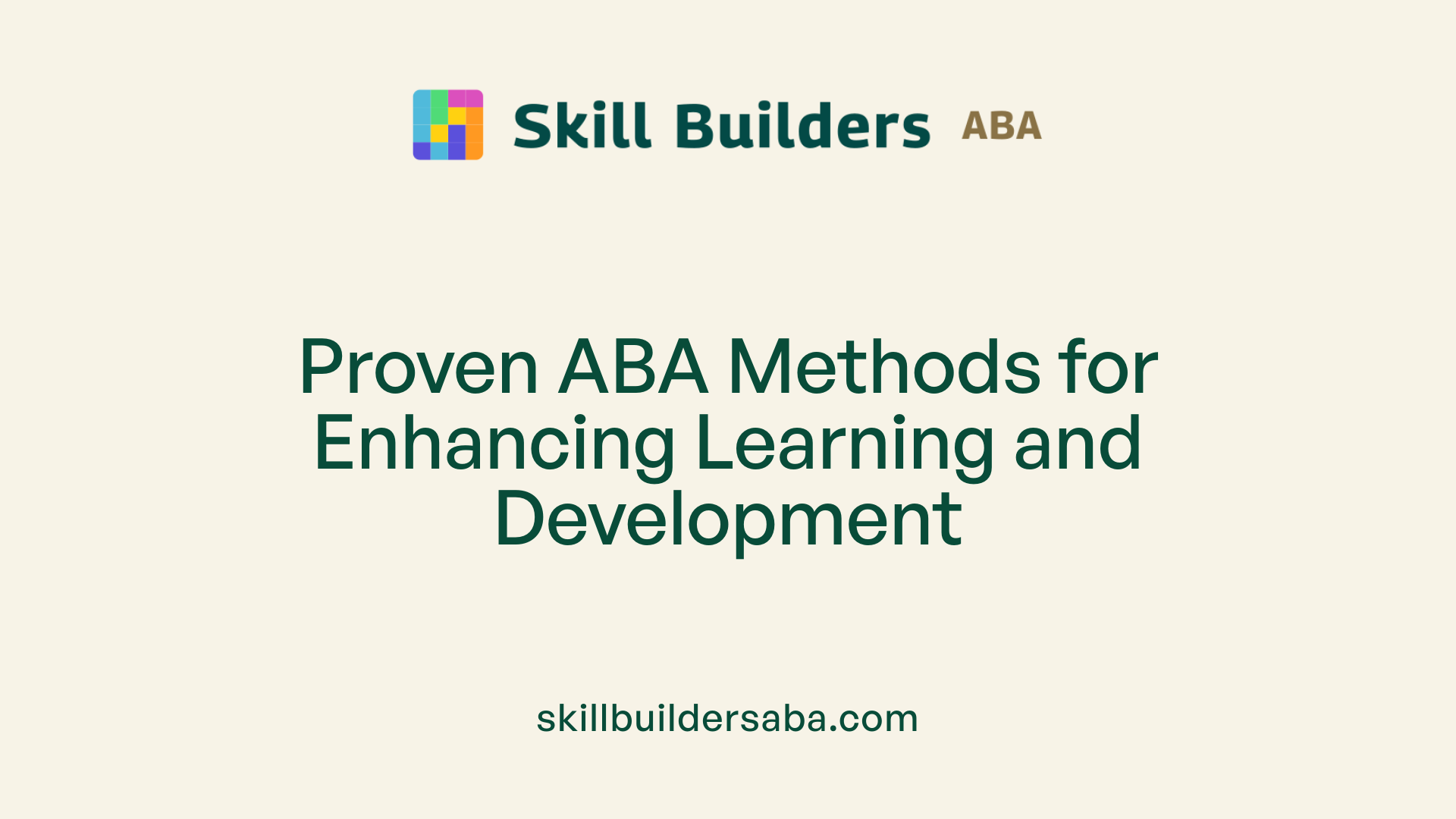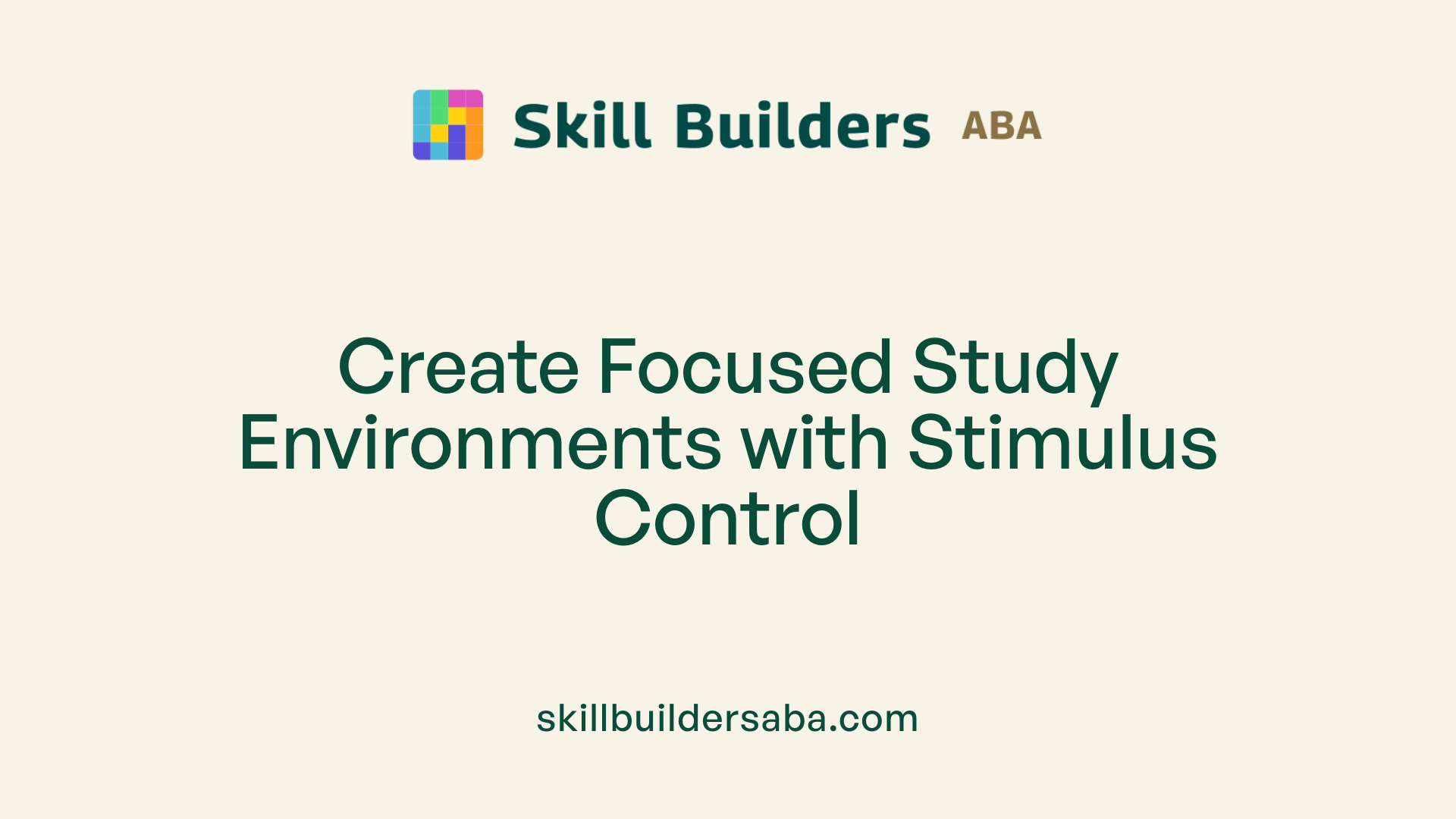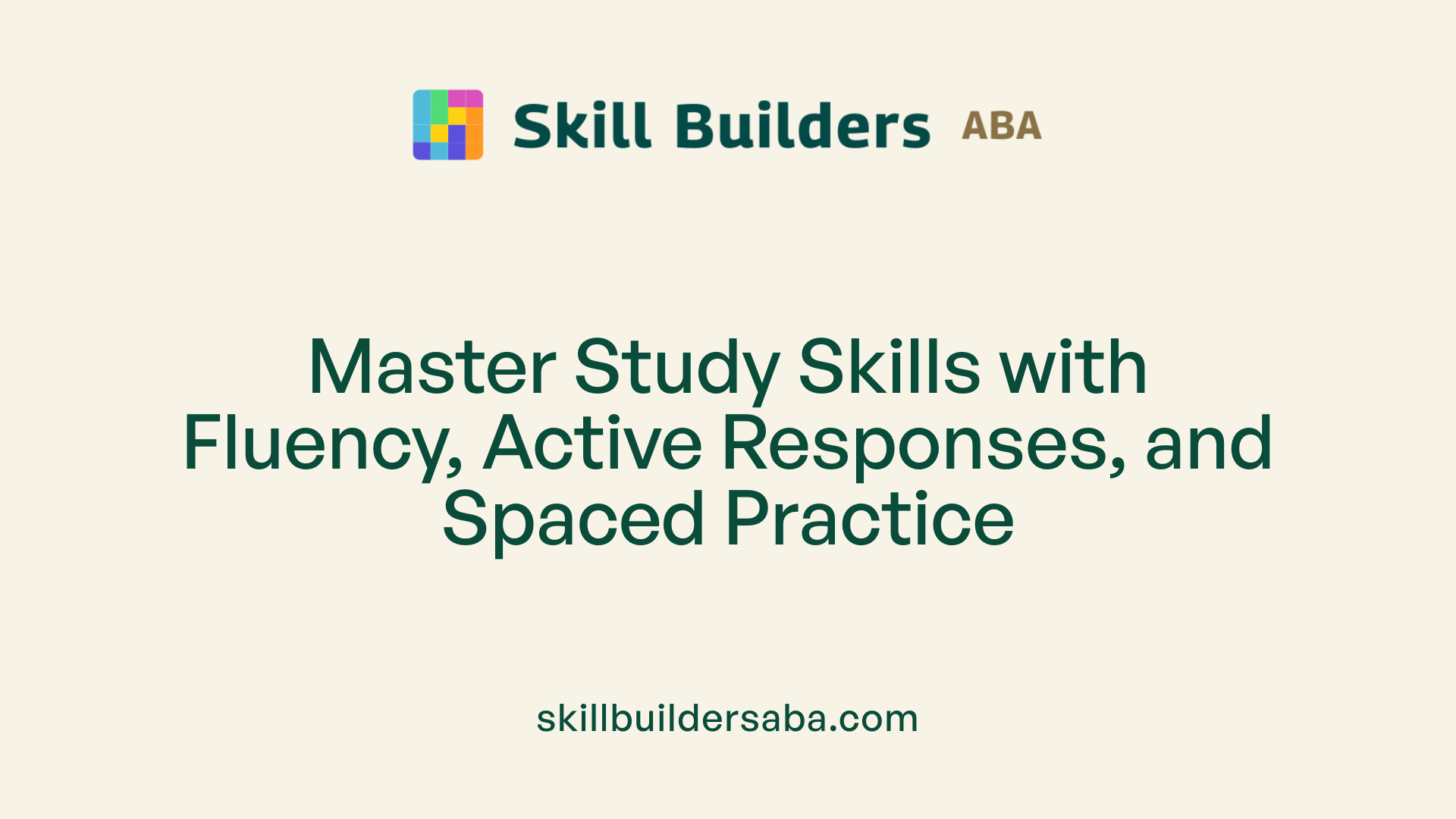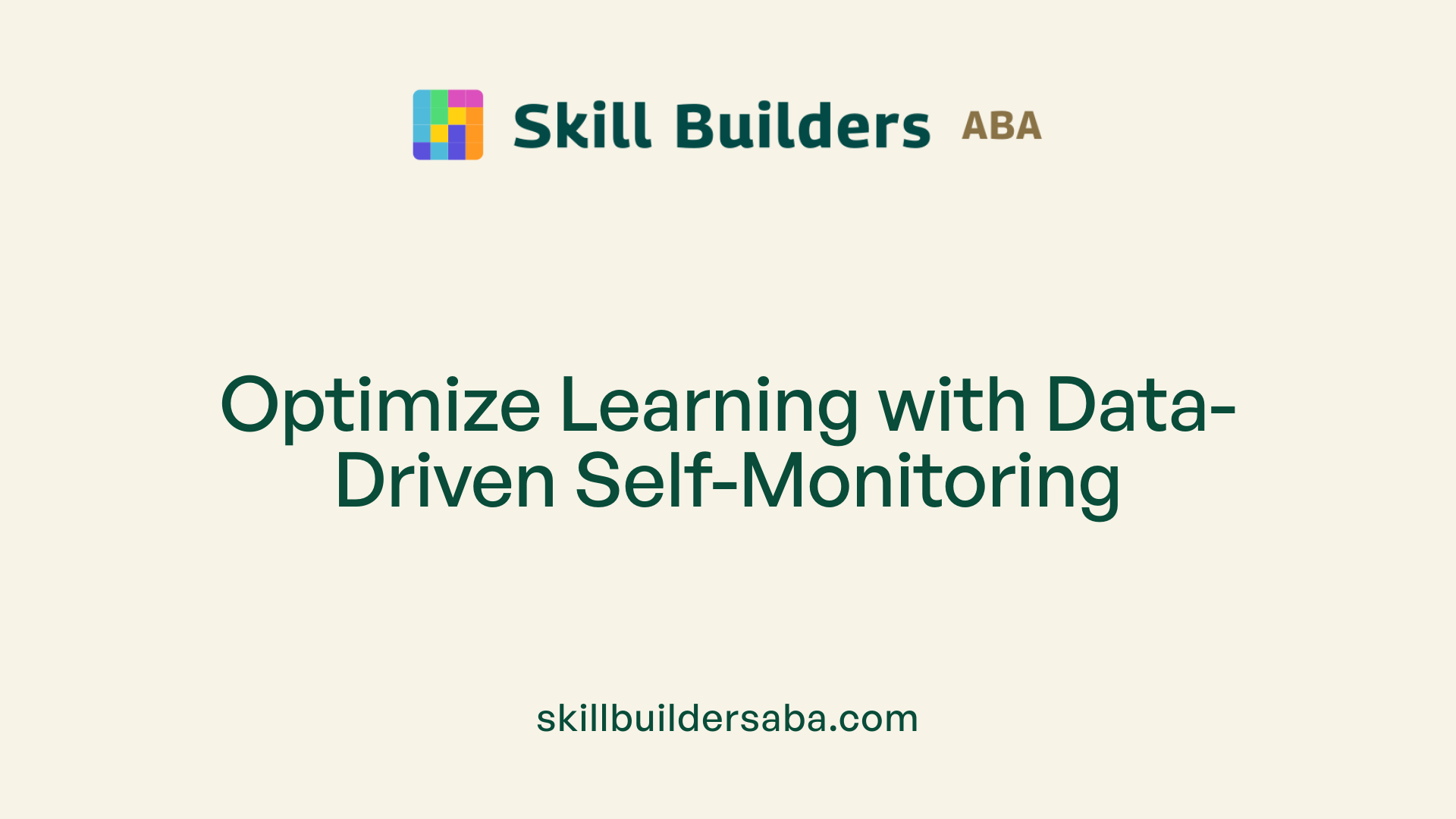
ABA strategies for building study habits
Transforming Study Skills through Evidence-Based Strategies
Unlocking Effective Study Habits with ABA Techniques
Applying Applied Behavior Analysis (ABA) strategies to study habits offers a scientifically supported way to enhance learning efficiency, consistency, and independence. This comprehensive approach utilizes proven techniques like reinforcement, prompting, task analysis, and data collection to build sustainable and adaptable study routines. Whether you're an educator, parent, or student, understanding how ABA principles can be tailored to academic settings provides valuable tools for fostering motivation, reducing frustration, and ensuring long-term success.
Understanding the ABA Method of Learning

What is the ABA method of learning?
Applied Behavior Analysis (ABA) is a scientific approach used to understand and improve behavior. It focuses on how environmental factors influence actions and uses this understanding to foster meaningful change. ABA aims not just to reduce challenging behaviors but also to teach new, socially important skills like communication, social interaction, and daily living tasks.
This method involves systematic data collection, setting specific intervention goals, and continuously analyzing progress. By tracking behaviors and responses, practitioners can tailor strategies to maximize effectiveness. Techniques such as prompting, shaping, task analysis, and reinforcement play central roles in ABA programs.
ABA is especially well-known for its application with individuals on the autism spectrum, but its principles are also used across fields like education, therapy, and behavior management. The overarching goal of ABA is to increase desirable behaviors, teach new skills, and reduce behaviors that interfere with learning and social participation.
Core Strategies Forming the Foundation of ABA

What are the foundational strategies of ABA?
Applied Behavior Analysis (ABA) hinges on several core techniques that guide effective intervention. These include reinforcement, prompting and fading, task analysis, stimulus control, and meticulous data collection and analysis. Each of these strategies plays a vital role in shaping behaviors, teaching new skills, and reducing problematic behaviors.
Reinforcement involves rewarding desired behaviors immediately to increase their likelihood. For instance, providing praise or small treats after a student completes a task encourages continued effort. Prompting and fading guide individuals toward correct responses by giving cues or hints, which are gradually removed to promote independence.
Task analysis breaks down complex skills into manageable steps, making learning less overwhelming and more achievable. Stimulus control involves setting up the environment to support focus, such as creating a dedicated study space or studying at consistent times. Finally, ongoing data collection and analysis involve tracking behaviors and progress to inform adjustments, ensuring interventions remain effective.
Together, these strategies form an interconnected system that promotes meaningful change by reinforcing positive behaviors, shaping skills through systematic teaching, and monitoring progress with precision.
Instructional Techniques Tailored for Academic Success

What are the instructional techniques used in ABA?
In Applied Behavior Analysis (ABA), a range of proven strategies are employed to enhance learning and promote positive behaviors. These techniques are carefully chosen based on individual needs and are designed to be systematic, measurable, and sustainable.
One of the most well-known methods is Discrete Trial Training (DTT). DTT is highly structured; it involves breaking down complex skills into small, manageable steps. Each step is taught through repeated trials, with immediate feedback and reinforcement to encourage mastery. This technique is particularly effective for foundational skills such as reading, math, and writing.
Natural Environment Teaching (NET) shifts the focus to learning within everyday settings. It promotes the generalization of skills by embedding teaching moments in natural routines and activities, making learning more meaningful and contextually relevant.
Pivotal Response Training (PRT) emphasizes key behaviors that impact multiple areas of development, such as motivation and self-management. By targeting these pivotal skills, PRT encourages more spontaneous and adaptable learning across various situations.
Behavioral Skills Training (BST) is a systematic approach that combines instruction, modeling, rehearsal, and feedback. It’s especially useful for teaching social skills, safety behaviors, and self-help strategies. BST ensures the individual not only learns new behaviors but can also practice and refine them in a supportive environment.
Incidental Teaching involves spontaneous teaching opportunities that arise naturally during interactions. It encourages learners to initiate communication, promoting engagement and practical language use.
These ABA instructional techniques—DTT, NET, PRT, BST, and Incidental Teaching—are complemented by understanding the functions of behavior and tailoring interventions to fit cultural contexts. Together, they form a comprehensive framework to support academic growth and behavioral development in diverse learners.
Reinforcement Strategies for Motivation and Skill Acquisition

What are reinforcement strategies in ABA?
In Applied Behaviour Analysis (ABA), reinforcement strategies are essential tools used to encourage and strengthen desired behaviors. These strategies work by providing consequences immediately following a behavior to increase the frequency of that behavior in the future.
One common form is positive reinforcement, which involves delivering a pleasant stimulus right after the target behavior. This could be praise, tokens, or access to preferred activities. For example, a student might earn a sticker after completing homework, increasing the likelihood that they will complete their assignments again.
Negative reinforcement, on the other hand, involves removing an unpleasant element contingent on the desired behavior. For example, reducing a difficult task or stopping an annoying noise when the individual performs the correct behavior can motivate future adherence.
Reinforcement strategies should be tailored to the individual to maximize motivation. Understanding what is rewarding for the person—whether praise, tangible rewards, or privileges—helps in designing effective intervention plans.
Consistency and timing are crucial. Reinforcements should be provided immediately after the behavior to create a clear connection between action and reward. This immediacy helps solidify learning and promotes skill development.
Using reinforcement strategies in studying can improve engagement, reduce frustration, and foster independence. Applying these techniques systematically helps build positive habits and enhances overall learning outcomes.
In summary, reinforcement strategies in ABA involve carefully selected consequences that make desired behaviors more likely to occur again, which is fundamental for learning and behavior change.
Enhancing Study Habits with Stimulus Control and Environment Modification

Creating dedicated study spaces
Designating a specific area solely for studying helps condition the brain to associate that environment with focus and learning. A consistent study spot makes it easier to switch into study mode and reduces the likelihood of distractions.
Studying at consistent times
Establishing a routine by studying at the same time every day reinforces the habit. Regular schedules help your mind anticipate study periods, making focus and retention easier to achieve.
Eliminating distractions
Removing interruptions like phones, TVs, and noisy backgrounds creates a more conducive environment for focused study. Using visual cues, such as quiet zones or study charts, can further signal that it's time to concentrate.
Stimulus control strategies for effective studying
Stimulus control involves modifying your environment to promote better focus. Techniques include creating clear physical boundaries for study areas, using visual aids to cue study times, and establishing consistent routines. By doing so, you condition your brain to associate specific cues with studying, which enhances motivation and reduces procrastination. Consistent environmental signals make it easier to transition into learning mode and maintain focus over time.
Using Fluency, Active Responding, and Spaced Repetition

How can active responding techniques like flashcards and SAFMEDS improve study habits?
Active responding techniques involve actively engaging with the material rather than passively reading or listening. Flashcards are a popular tool; they force you to recall information, strengthening memory connections. SAFMEDS, which stands for Say Aloud Fast, Minute Every Day, Shuffled, is a specific flashcard-based system designed to build fluency in behavioral terminology and other subjects. By practicing these techniques regularly, students enhance both the speed and accuracy of their responses, making knowledge more accessible during tests and real-life applications.
Why is spaced repetition important for long-term retention?
Spaced repetition means spreading study sessions over time rather than cramming all at once. This method helps transfer information from short-term to long-term memory. When learners revisit material at increasing intervals, it reinforces neural connections, making recall more automatic over time. Techniques such as review schedules or digital tools that remind students to revisit concepts can optimize this process, reducing forgetfulness and improving retention.
How do mnemonic devices assist in memorization?
Mnemonic devices are mental aids that associate complex information with simple cues like acronyms, rhymes, or visual images. These strategies make memorization easier by creating memorable links between new data and familiar concepts. For example, using a rhyme to remember a list or associating an acronym with a series of words can significantly reduce the effort needed to recall detailed information.
| Technique | Purpose | Example |
|---|---|---|
| Flashcards | Enhance active recall and fluency | Vocabulary terms with definitions |
| SAFMEDS | Build mastery in behavioral terms | Speaking flashcards quickly daily |
| Spaced Repetition | Improve long-term memory | Reviewing notes every few days |
| Mnemonic Devices | Aid memorization of complex info | Acronyms for lists or concepts |
Using these interconnected methods—active responding, spaced repetition, and mnemonic devices—can make studying more effective. They support understanding, retention, and application of knowledge, ultimately leading to better academic performance and confidence in learning.
Data Collection and Self-Monitoring for Progress Optimization

What does data collection and self-monitoring involve?
Data collection and self-monitoring are essential strategies for tracking progress in study habits and making informed adjustments. This process involves systematically recording various aspects of study behavior, such as the amount of time spent studying, accuracy of responses, and performance on practice tests or mock exams.
By keeping detailed records, students can identify patterns, strengths, and areas needing improvement. For example, tracking study time on subjects like math versus reading may reveal which area requires more focused effort. Monitoring accuracy in answering questions helps gauge understanding, while recording scores on practice exams provides a clear picture of progress towards learning goals.
How can data guide the adjustment of strategies?
Using this collected information, students can refine their study routines. Suppose data shows that focus wanes after 25 minutes, it may indicate a need to incorporate techniques such as the Pomodoro Technique—studying for 25 minutes followed by a short break. If accuracy remains low in specific topics, additional targeted practice or alternative learning methods like visual aids or mnemonic devices might be necessary.
Regular review of this data promotes a dynamic and responsive study plan, helping students avoid stagnant or ineffective habits. Adjustments based on real evidence can boost motivation, as students see tangible signs of improvement and understand what works best for their learning style.
What tools and techniques support effective self-monitoring?
Several tools can facilitate self-monitoring efforts. Digital apps and online trackers allow students to log study sessions, record quiz scores, and note difficulties encountered. Physical journals or printable charts are also effective for visual learners.
Techniques for effective self-monitoring include setting clear, achievable goals, and using checklists to ensure all study tasks are completed. Timers and alarms can help manage study sessions and breaks objectively. Some students benefit from recording their responses in flashcards or using software like SAFMEDS—'say aloud fast, minute every day, shuffled'—which enhances active responding and fluency.
By consistently assessing their data and reflecting on progress, students develop a deeper awareness of their study patterns. This ongoing process fosters independence and promotes strategic adjustments that lead to better understanding and retention.
| Aspect of Self-Monitoring | Tools & Techniques | Benefits |
|---|---|---|
| Tracking study time | Timers, apps, paper logs | Ensures adequate study periods |
| Monitoring accuracy | Practice tests, flashcard software | Identifies knowledge gaps |
| Recording performance | Score sheets, digital trackers | Motivates progress |
| Reviewing data | Weekly summaries, graphs | Guides strategic changes |
| Adjusting strategies | Goal-setting, planning tools | Enhances learning efficiency |
How does ABA apply to studying?
Applied Behavior Analysis (ABA) emphasizes using data-driven decisions to modify behaviors effectively. For students, this means systematically observing and recording study habits, then applying reinforcement strategies—such as praise or small rewards—to encourage productive behaviors.
By employing ABA techniques like prompting, fading, and reinforcement, students can build consistent routines, increase focus, and reduce distractions. Regular data collection ensures that strategies are tailored to individual needs, maximizing learning gains.
In summary, diligent data collection and self-monitoring form the backbone of efficient study habits. They facilitate personalized adjustments, foster accountability, and ensure that effort translates into meaningful academic progress.
The Broader Impact of ABA on Academic and Behavioral Development

How does ABA contribute to the development of social skills and independence?
Applied Behaviour Analysis (ABA) plays a significant role in fostering social skills and independence, especially in children and individuals with developmental challenges. Techniques such as social skills training and self-management teach individuals how to communicate effectively, interact appropriately, and regulate their own behaviors.
For example, social skills training might include teaching conversational turn-taking, sharing, or understanding social cues through structured activities. Self-management encourages learners to monitor their own actions, recognize triggers for certain behaviors, and apply coping strategies independently.
This approach helps individuals become more self-reliant in daily activities, enhances their confidence, and promotes integration into social environments like schools and community settings.
How is skill generalization achieved through ABA?
Generalization is a crucial goal in ABA, ensuring that learned behaviors transfer across different contexts and environments. Techniques such as natural environment teaching (NET) and the use of visual supports facilitate this process.
In practice, skills learned through ABA are practiced in real-world settings like playgrounds, restaurants, or home environments, not just in clinical or classroom settings. For instance, a child who learns to say "hello" in therapy sessions is encouraged to use greetings with family and peers as well.
Visual tools such as schedules, social stories, and charts serve to cue and reinforce behaviors across various situations, promoting lasting behavioral changes beyond initial training contexts.
How does ABA support behavior management in educational settings?
ABA offers a systematic framework for managing classroom behaviors and supporting academic growth. Teachers implement strategies like positive reinforcement—rewarding desired behaviors with praise, tokens, or privileges—to motivate students.
Prompting and fading help guide students towards independence, while task analysis simplifies complex tasks into smaller, manageable steps. Data collection helps educators track progress and identify specific behaviors needing intervention.
Furthermore, interventions like extinction (withholding reinforcement for challenging behaviors) and behavior chaining support the development of functional, socially appropriate behaviors. Overall, ABA provides educators with evidence-based tools to create an engaging, structured, and positive learning environment.
| Technique | Purpose | Examples |
|---|---|---|
| Social Skills Training | Enhance interaction and communication | Role-playing, social stories |
| Self-Management | Promote independence | Monitoring own behaviors, setting goals |
| Reinforcement Strategies | Increase desired behaviors | Praise, tokens, privileges |
| Prompting and Fading | Guide responses, encourage independence | Verbal hints, gestural cues, gradually removing prompts |
| Data Collection and Analysis | Track progress, inform adjustments | Recording behaviors, analyzing patterns |
Overall, ABA's structured methods support both behavioral and academic growth, helping individuals achieve greater independence and social competence.
Harnessing ABA for Lasting Study Success
Implementing ABA strategies in study habits offers a systematic, evidence-based approach to mastering new skills, maintaining motivation, and developing independence. Tailoring reinforcement, environmental supports, and data-driven adjustments ensures that study routines are effective, sustainable, and adaptable across various learning contexts. By understanding and applying these principles, educators, parents, and students can foster a culture of continuous improvement and academic excellence.
References
- How to Use ABA Strategies to Study for the BCBA Exam
- ABA Techniques: Strategies for Behavior Analysts - GSEP Blog
- 10 Effective ABA Behavior Management Strategies - Ori Learning
- 8 Study Strategies for the BCBA® Exam - Tackling the Test Series
- Nine ABA Strategies For Enhancing Learning And Development
- How ABA Can Support Academic Skills: A Comprehensive Guide
- What is Applied Behavior Analysis?
Reach Out Today
Learn more about how we can support your child’s growth and development. Contact us to discuss our services and availability in your area.
.svg)